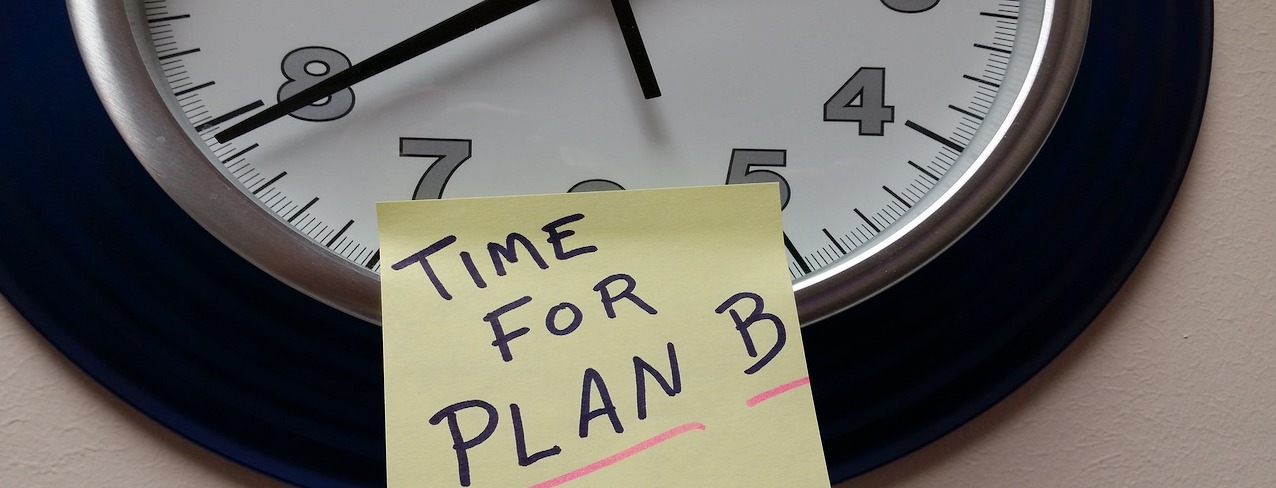Last month marked the 1-year anniversary of Maxand. How time flies! 🙂
When I started, I couldn’t have imagined that over 24,500 people¹ from as many as 115 countries would find their way to the site in the very first year.
But what’s even more encouraging for me to see is that readers seem to find the articles interesting and helpful. The number of pages each unique visitor reviews on average has risen from 2 to 6 over this 12-month period. And many visitors return to the site more than once.²
Now that the Maxand website has a little bit more substance, let me take a moment to reflect on the methods, tools, techniques and suggestions offered here.
What does it mean that they are “evidence-based”? How effective can you expect them to be? And what do you do, if they don’t seem to work?

1. What does it mean that the Maxand articles are “evidence-based”?
Much of what I learned as a psychologist was about the science and art of influencing human behaviour. Setting up health campaigns to help people stop smoking. Drafting psychotherapy approaches to counter depression. Developing education methods that would help people learn faster. Designing workspaces that would help people feel good and be more productive.
A. Methods need to “work”
Whatever we were developing or using, it needed to “work”. It needed to be effective. That makes intuitive sense, doesn’t it? It wouldn’t be a good idea for a psychologist (or any other professional) to use methods that had no impact or even a bad impact.
Over time, psychologists and other social scientists have thought of ways to determine the effects of the methods they developed. They asked themselves, “Did something actually influence human behaviour in the way we intended, or did it not?”
Using our earlier examples, the questions could be, “To what extent did people actually quit smoking after the health campaign? Or feel less depressed after a specific form of psychotherapy? Learn faster with a certain education method? Or become happier and more productive with a different workspace design?”
B. How do you determine if methods work?
The most accepted way to determine if methods work is by undertaking scientific research and using statistics to test results. Doing this in a more or less similar manner across the world has given social scientists a common approach and language. Which, in turn, has enabled them to learn from and build on each other’s work.
The end goal is to be able to offer methods that have consistently proven to be effective and for which required conditions are known.

2. How effective can you expect the methods, tools, techniques and suggestions to be?
On the Maxand website, you find methods, tools, techniques and suggestions to help you discover what you want. They are selected on the basis of their proven effectiveness across different scientific studies. But how effective can you expect them to be on a personal level?
To answer that question, we have to look a little closer at the way research is done. Yes, it’s true that scientific research has given social scientists a much-needed way to test the effectiveness of what they develop. Yet, the use of complicated statistics and mathematical symbols sometimes creates a false sense of “fact-ness” that is misleading.
This isn’t mathematics or physics, with straightforward right and wrong answers. The study of human behaviour isn’t as clear-cut. To put it very simple, the social sciences are not in the business of finding absolute truths. They are in the business of testing probabilities.
An example …
Let’s say a team of psychologists have developed a method called “Do the opposite” to help people beat an unwanted habit. They get one group of participants to “do the opposite” for 2 weeks, while another group is left to their own device. After 6 weeks, the scientists review how successful the participants in both groups are at beating their unwanted habit. And they test if the difference between the two groups can be considered “statistically significant”.
This sounds like there might be a clear answer (yes or no). But what statistics actually allow these scientists to test is how likely it is that the “Do the opposite” method made a real difference. Or what factors likely affect its impact. Perhaps “Do the opposite” works better for young people, or women, or extraverts, or …
No matter how rigorous the design of a study, social scientists will not be able to guarantee that any given method will work all the time for everyone in exactly the same manner. At best, they can build evidence that it’s highly likely that a certain method is effective under certain conditions.
The methods, tools, techniques and suggestions on the Maxand website have all proven to be effective across a range of scientific studies. This means – based on the available evidence – that they will likely be helpful in some way for most people who try them. However, it doesn’t mean that they will have the same impact for every individual person in all circumstances.

3. So now what?
Given that there are no guarantees, how do you approach the methods, tools, techniques and suggestions that are offered here?
A. Try!
First of all, try them. After all, they have proven to be effective for different groups of people across different research projects. Definitely consider trying something, if you experience some internal resistance to it. That feeling can be a very significant sign that you’re getting out of your comfort zone and are about to tackle something very fundamental. Remember, if you continue to do more of the same, you’ll simply get more of the same, so you might as well explore something else.
B. If it doesn’t seem to work, first ask yourself:
- Are you really trying?
(and no, reading about something is not the same as doing it!) - Are you giving it enough time?
Certain methods, tools, techniques and suggestions take time to exert their full impact on your journey of discovering what you want. Think of, for example, experimenting with new things, learning new skills, using imagery and realigning the network of people around you. Have a look at the individual articles to get a sense of the required time and see if you can stay committed for at least that period. - Can you think of any particular reasons why something may not work for you?
If you know of any reasons, examine if there’s anything you can do about them. - Is there a possibility that there actually is an effect, but that it’s somehow difficult for you to notice it yourself?
One way to help yourself in this respect, is to use a quick writing technique to capture your thoughts and emotions at different moments in the process. Reading the different pieces of text later makes it easier to spot if anything has changed or is changing. Another tip if you’re not sure, is to ask someone you trust if they have observed any changes or effects over time.
C. But then … if it still doesn’t seem to work …
There’s always the possibility that a particular method, tool, technique or suggestion simply isn’t very helpful for you as an individual. That happens. It doesn’t mean you’re strange or unfitting. But the fact that this is always a possibility, does mean that you can’t hide behind “I’ve tried it all and it doesn’t work for me.”
If something doesn’t work for you, find something else that does. Explore! Experiment! Use your creativity to achieve the same result.
So if writing doesn’t help you to untangle your thinking, perhaps drawing does. Or running. Or throwing punches at a boxing ball. If you learn to do something mostly by observing other people first before doing it yourself, go for it! If poems work better for you than images in catching visions of the future, then write as many as you can. Whatever works for you!
In general, remember that discovering what you want – while sometimes involving big moments of revelation – often feels like taking small steps, stumbling in the dark, and not feeling quite sure yet where you’re going. You may not get there the first time, or the second, or the third. As world leader Nelson Mandela once said “Do not judge me by my successes, judge me by how many times I fell and got back up again”.
Footnotes
1. People versus unique visitors
Technically speaking, what is registered is the number of so-called “unique visitors” based on the number of unique IP-addresses from which people have visited the site (also see remark 2 below on visitor privacy). Theoretically, a person could be accessing the site from multiple IP-addresses (for example, from home wifi as well as office networks), which is why I have adjusted the total number of unique visitors down from over 26,000 to over 24,500 to arrive at the estimated number of actual people based on available estimates.
2. Several remarks with the data:
- To avoid any issues with privacy, Maxand doesn’t use any tools like Google Analytics to track visitor data. I only have access to some overall data as provided by the website’s host, such as number of visitors and number of pages accessed. Also see the section on privacy policies in “Please note ...”.
- The numbers exclude my own visits to the site as well as visits that were clear outliers and have been marked “suspicious”.
3. Reviewing the use and misuse of statistical significance.
In spite of all the diligence that goes into proper scientific research, statisticians and social scientists have been critically reviewing the current use (and misuse) of statistics in research. What has been under particular scrutiny is the tendency to say that some method, tool or technique isn’t effective because study results were “not statistically significant”. For a flavour of the discussion around the use of statistical significance have a look at the following articles.
- Scientists rise up against statistical significance by Valentin Amrhein, Sander Greenland and Blake McShane.
- Scientists found one thing they can agree on: It’s time to stop misusing P-values by Christie Aschwanden.
